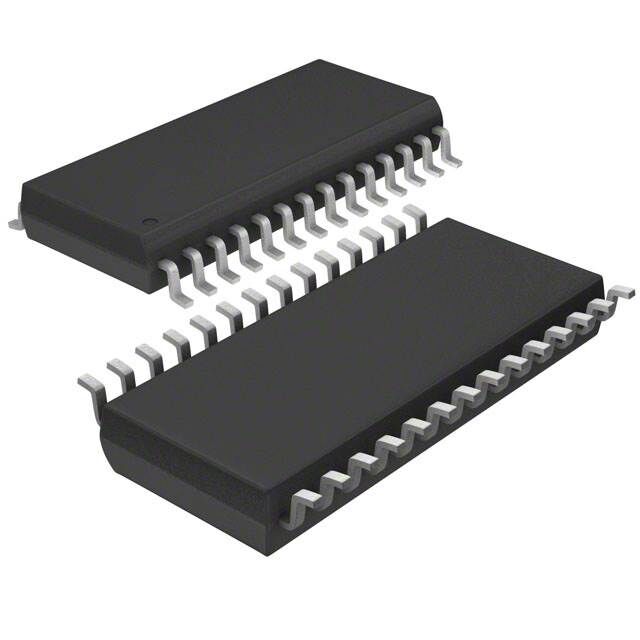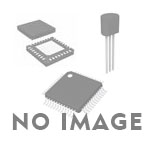- Online chat

FT232RL-REEL
1. General Introduction
The FT232RL - REEL is a popular USB - to - serial UART (Universal Asynchronous Receiver - Transmitter) converter IC manufactured by FTDI (Future Technology Devices International). It serves as a bridge between a computer's USB port and serial - based devices, enabling seamless communication between the two.
2. Key Features
2.1 USB Compatibility
The FT232RL - REEL is fully compliant with the USB 2.0 specification. This allows it to be easily connected to a wide range of computers, including desktops, laptops, and industrial PCs, without the need for additional drivers in most operating systems. It supports both full - speed (12 Mbps) and low - speed (1.5 Mbps) USB communication, providing flexibility in different application scenarios.
2.2 Serial Communication
It provides a standard serial UART interface, supporting data rates from 300 baud to 3 Mbaud. This wide range of data rates makes it suitable for various serial communication applications, such as programming microcontrollers, communicating with serial sensors, and interfacing with legacy serial devices. The UART interface includes standard signals like TXD (Transmit Data), RXD (Receive Data), RTS (Request to Send), and CTS (Clear to Send), which are commonly used for serial data transfer and flow control.
2.3 On - Chip Crystal Oscillator
The FT232RL - REEL features an on - chip crystal oscillator, eliminating the need for an external crystal in most applications. This simplifies the circuit design and reduces the overall component count, making it more cost - effective and reliable. The on - chip oscillator provides a stable clock source for the USB and serial communication functions.
2.4 Low Power Consumption
The device is designed with low power consumption in mind. It operates at a relatively low supply voltage (typically 3.3V or 5V) and consumes minimal power during normal operation. This makes it suitable for battery - powered devices and applications where power efficiency is a priority.
2.5 Small Form Factor
It comes in a small - sized package, such as the 28 - pin SSOP (Shrink Small Outline Package). The compact form factor allows for easy integration into space - constrained designs, such as handheld devices, IoT (Internet of Things) modules, and small - scale embedded systems.
3. Applications
3.1 Microcontroller Programming
The FT232RL - REEL is widely used for programming microcontrollers. It can be used to establish a serial communication link between a computer and a microcontroller development board, allowing developers to upload code and debug programs. Many popular microcontroller platforms, such as Arduino, use the FT232RL - REEL or similar USB - to - serial converters for programming purposes.
3.2 Serial Sensor Interfacing
In sensor applications, the FT232RL - REEL can be used to interface serial sensors with a computer. For example, it can be used to connect temperature sensors, humidity sensors, or accelerometers that have a serial output. The computer can then collect and process the sensor data for further analysis.
3.3 Industrial Automation
In industrial automation systems, the FT232RL - REEL can be used to communicate with serial - based industrial devices, such as programmable logic controllers (PLCs), motor drives, and data loggers. It provides a convenient way to connect these devices to a computer for monitoring and control purposes.
3.4 DIY Electronics Projects
For hobbyists and DIY electronics enthusiasts, the FT232RL - REEL is a popular choice for building various projects. It can be used to add USB connectivity to custom - made electronic devices, such as robots, home automation systems, and experimental circuits.
4. Electrical Specifications
4.1 Supply Voltage Range
The FT232RL - REEL typically operates within a supply voltage range of 3.3V ± 5% or 5V ± 5%. This allows for compatibility with different power sources commonly used in electronic systems.
4.2 USB Data Transfer Rate
As mentioned earlier, it supports USB data transfer rates of up to 12 Mbps (full - speed) and 1.5 Mbps (low - speed).
4.3 Serial Data Rate
The serial data rate can be configured from 300 baud to 3 Mbaud, providing flexibility in different serial communication applications.
4.4 Operating Temperature Range
The device is designed to operate within a temperature range of - 40°C to 85°C, making it suitable for use in a wide variety of environmental conditions.
In summary, the FT232RL - REEL is a versatile and reliable USB - to - serial UART converter that offers a range of features suitable for a wide range of applications, especially in the fields of embedded systems, industrial automation, and DIY electronics.




